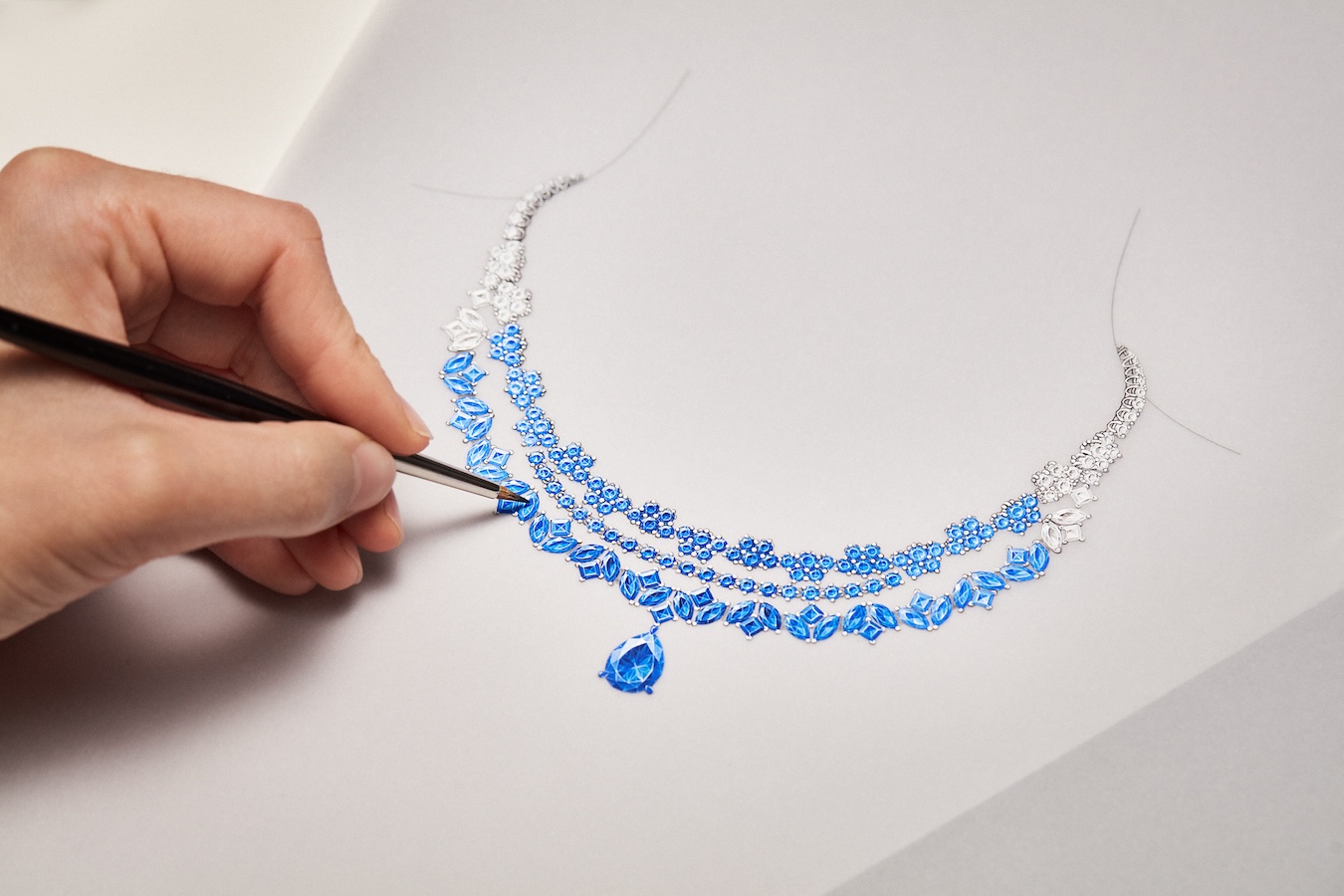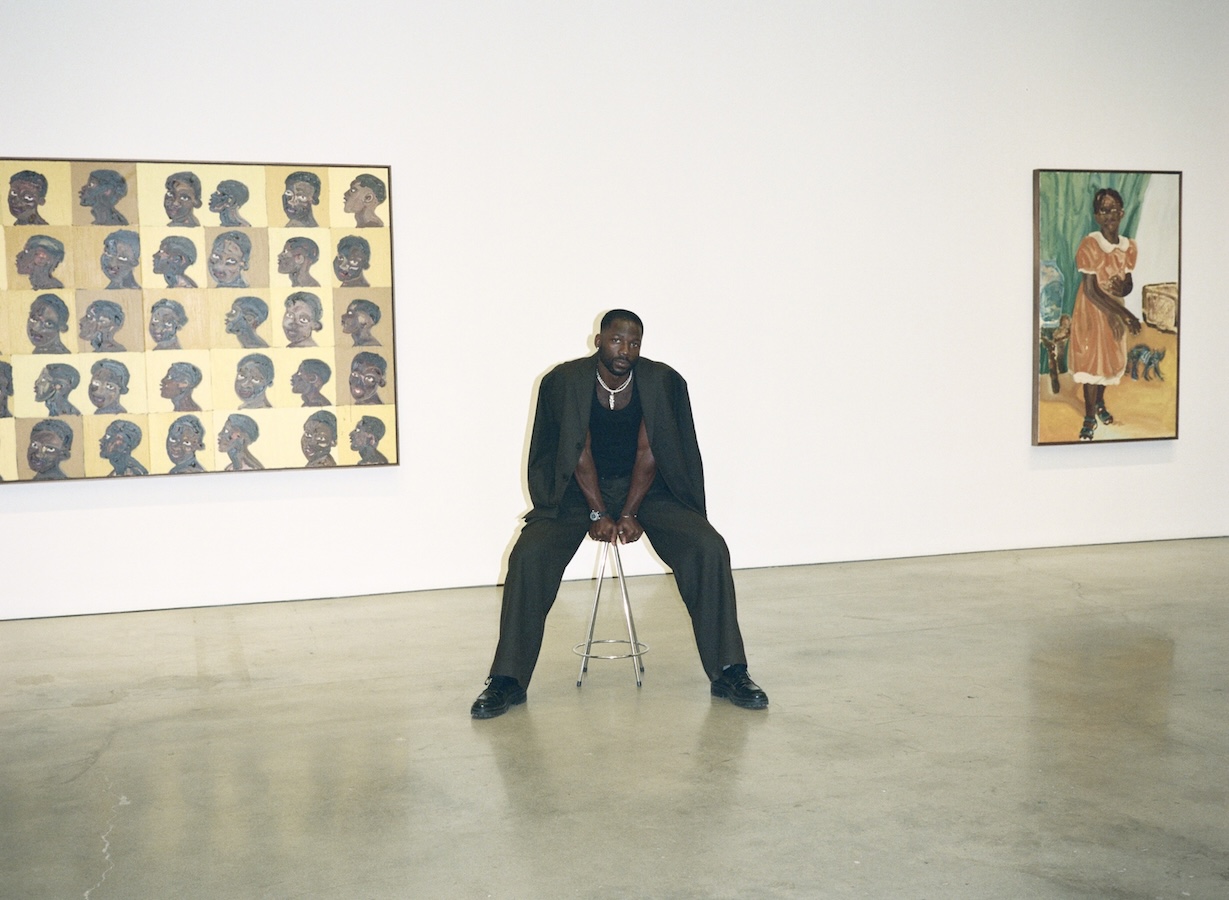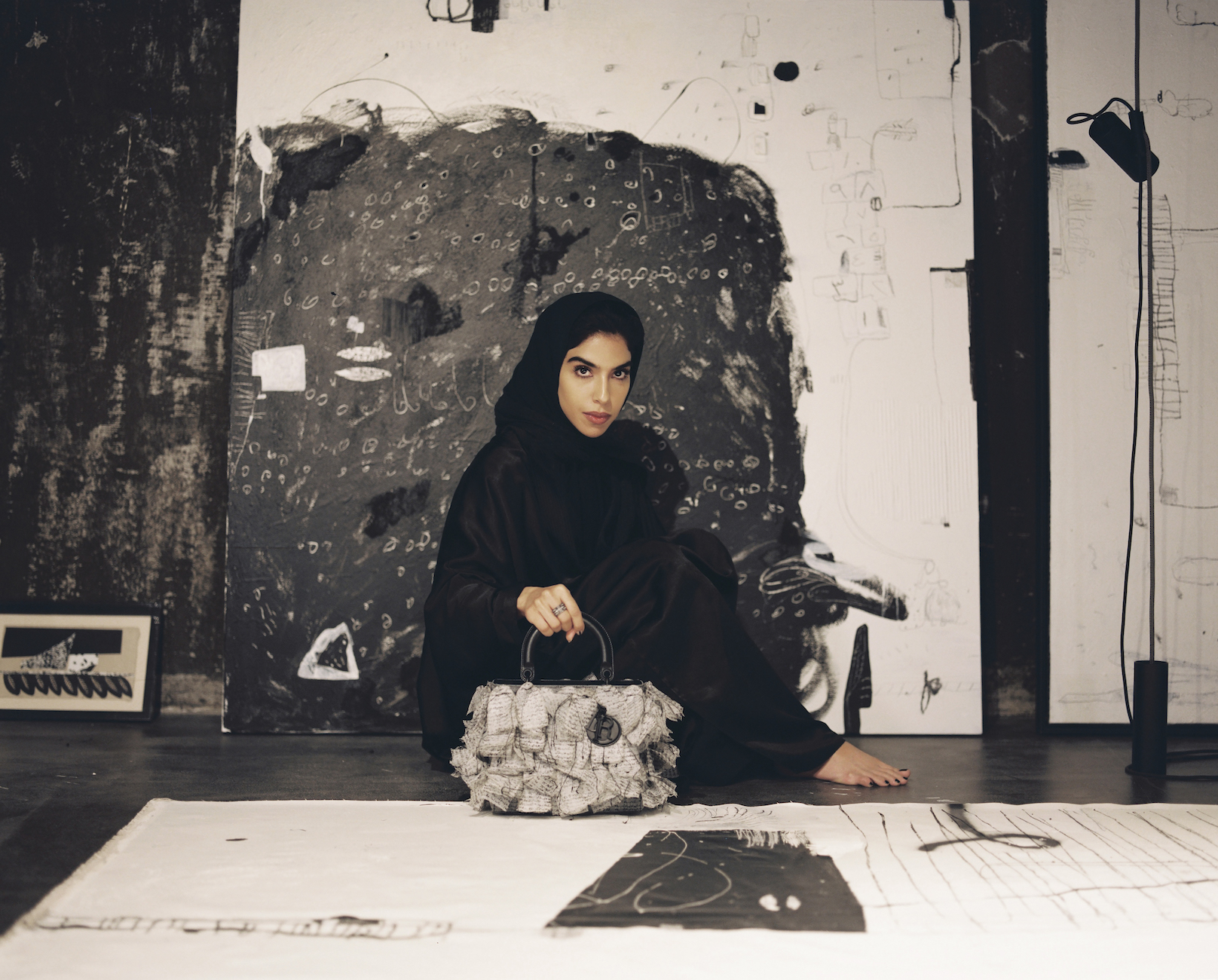“Christian Dior: Couturier du Rêve” at the Musée des Arts Decoratifs commemorates the 70th anniversary of Dior. It presents more than 300 gowns, made from 1947 to today, from the original couturier, Monsieur Dior, as well as the talents that followed at the helm of the house: Yves Saint Laurent, Marc Bohan, Gianfranco Ferré, John Galliano, Raf Simons, and current creative director Maria Grazia Chiuri. Accompany the garments, staged within an impressive installation of multilevel sets, are photographs, illustrations, sketches, letters, paintings, and furniture. Whitewall heard from the museum’s director, Olivier Gabet, and the Denver Art Museum’s Avenir Foundation Curator of Textile Art and Fashion, Florence Müller, about the blockbuster fashion exhibition.
WHITEWALL: The exhibition opens with Dior’s early life, growing up in Granville, running an art gallery from 1928 to 1934 with Jacques Bonjean and Pierre Colle. Who were some of the artists in his circle?
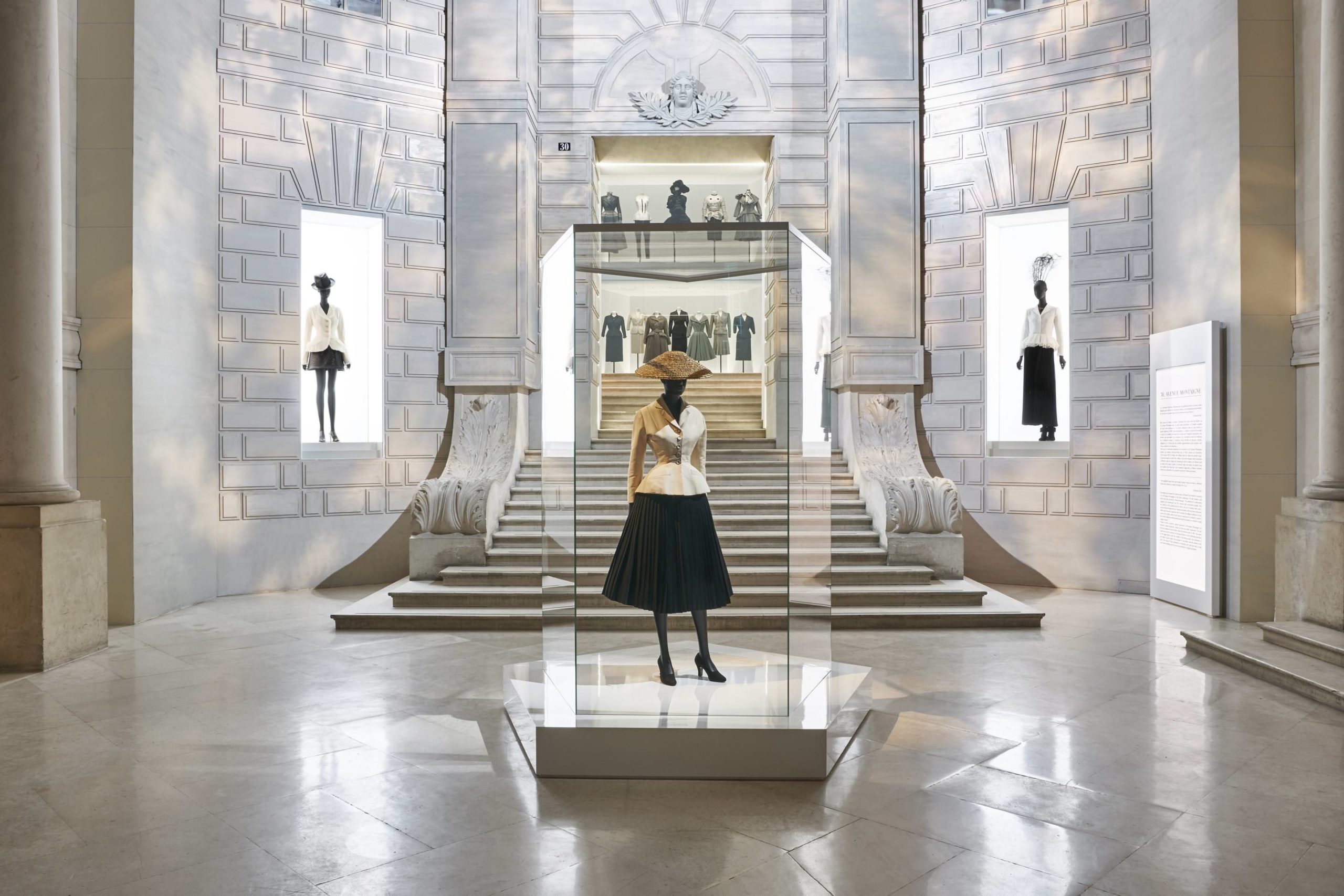
Installation views of “Christian Dior: Couturier du Rêve” at the Musée des Arts Decoratifs,” courtesy of Dior, photos by ©Adrien Dirand.
OLIVIER GABET: The social, cultured, and artistic set with whom the couturier associated was also the milieu of the Musée des Arts Décoratifs. And he was also a friend of artists; he was close to Christian Bérard, Salvador Dalí, and Emilio Terry, for example. He was a very fine connoisseur, especially of Impressionist paintings. I think he had a great artistic sensibility. He had a painter’s eye. Indeed, it is an aspect of his personality to which museum lenders and those paying attention to this historical and unique retrospective were very responsive.
WW: Later, how do we see his passion for art influencing his designs?
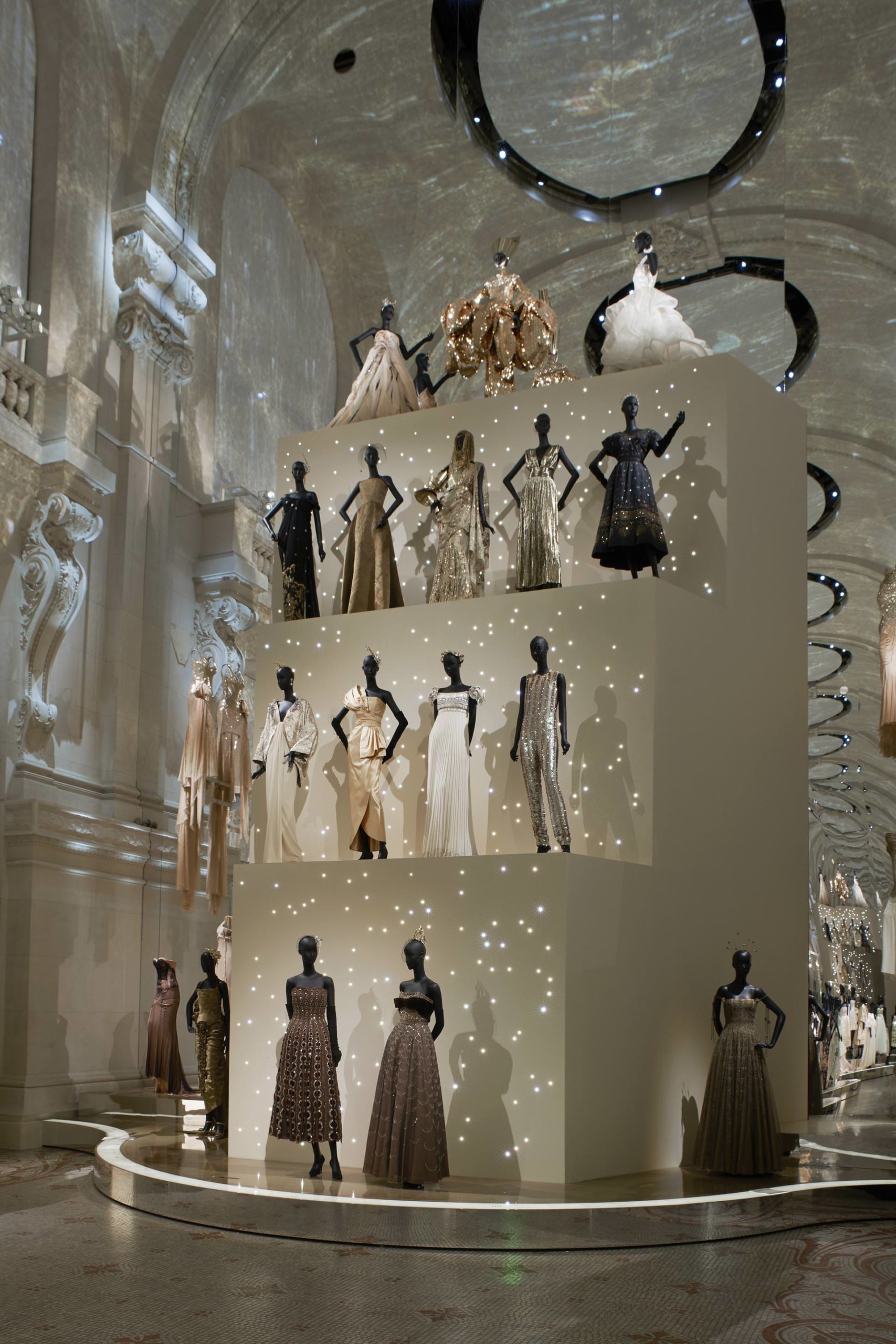
Installation views of “Christian Dior: Couturier du Rêve” at the Musée des Arts Decoratifs,” courtesy of Dior, photos by ©Adrien Dirand.
OG: Christian Dior came to fashion via painting and art, and because of this color, proved essential to how he conceived his creations. In reading his writings, I discovered that he had an extraordinary visual culture, so it was unsurprising that his first means of expression as a couturier would be through line and color.
FLORENCE MÜLLER: Yes, these creations are the product of someone who’s highly cultivated, with a deep knowledge of art history. When he decided to cease his career as a gallerist and wanted to learn fashion design, he said in his memoirs that his knowledge of art and his ability to sketch proved more than sufficient.
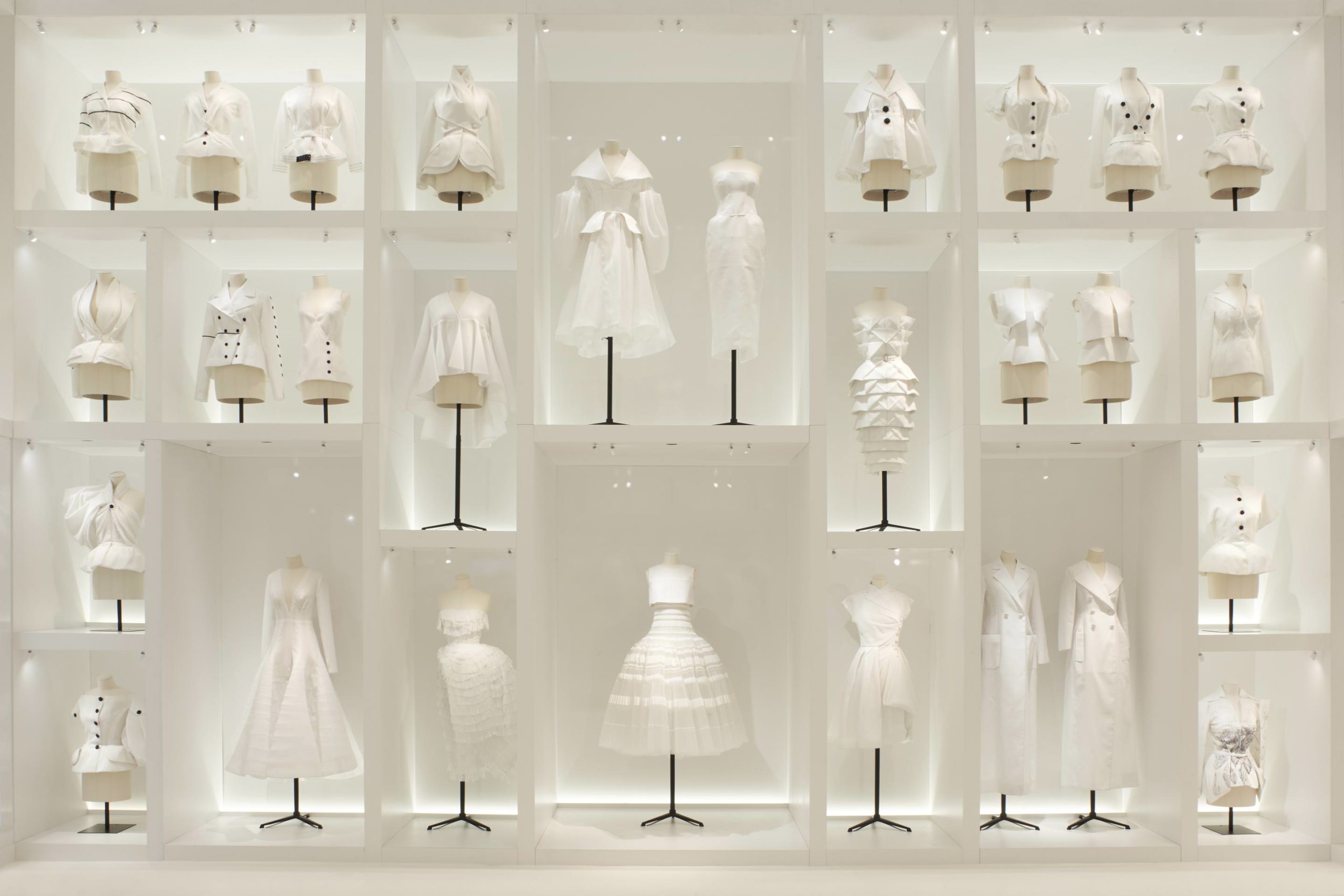
Installation views of “Christian Dior: Couturier du Rêve” at the Musée des Arts Decoratifs,” courtesy of Dior, photos by ©Adrien Dirand.
WW: How did Christian Dior redefine the feminine silhouette in 1947? How did he revitalize the practice of haute couture in post–World War II Paris?
FM: In 1947 he was the man who managed, in fashion, to reconstruct the postwar world. The world was reduced to rubble, broken, demoralized. There was nothing to display, and even less so in fashion, that the young generation had any belief in the future. Christian Dior brought this sense of joy, this belief in a beautiful future, with an enthusiastic, optimistic worldview. With his show called the New Look, he restored confidence to women and became the most famous Frenchman in the world!
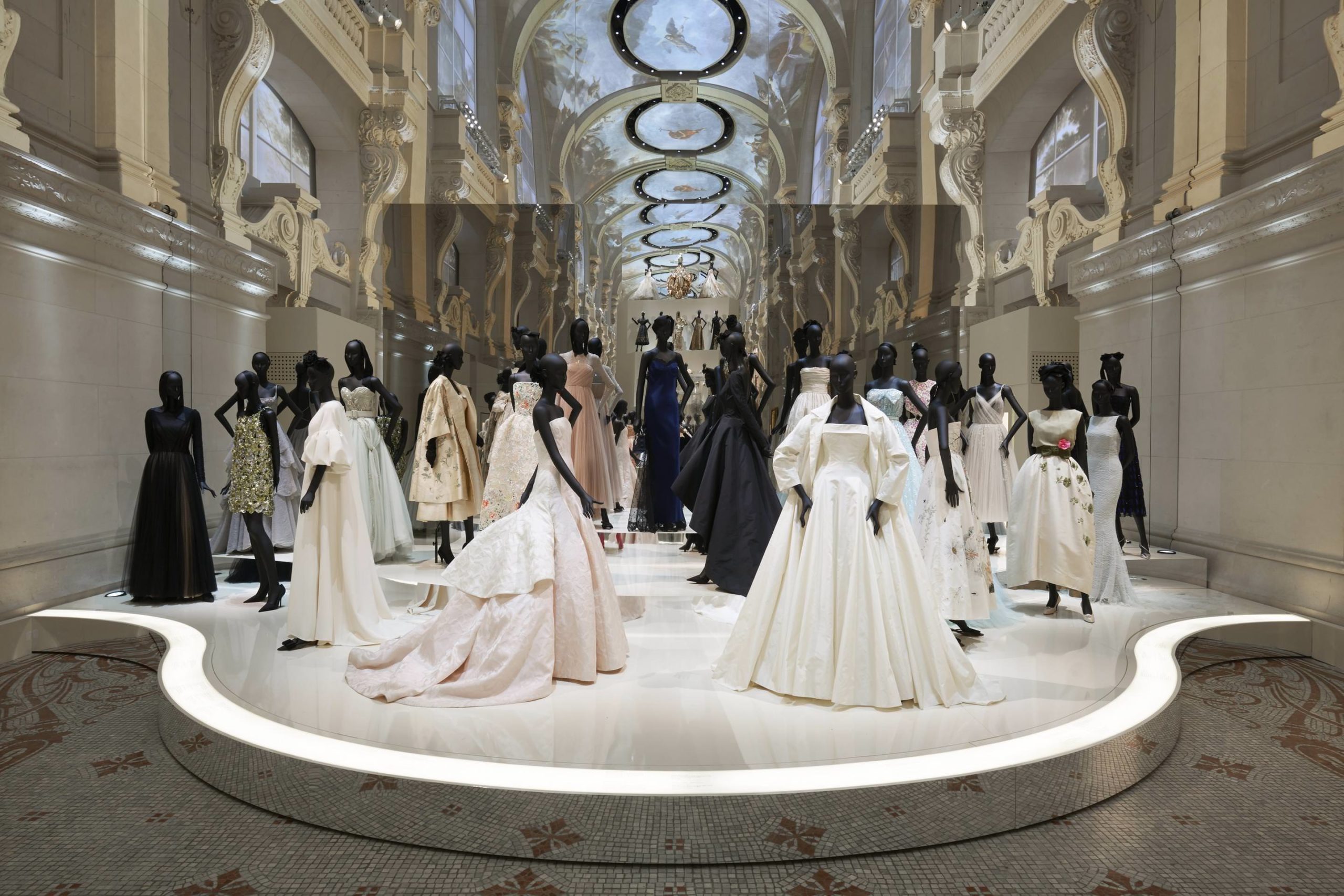
Installation views of “Christian Dior: Couturier du Rêve” at the Musée des Arts Decoratifs,” courtesy of Dior, photos by ©Adrien Dirand.
When Christian Dior conceived the idea of the New Look, it involved a construction that hadn’t previously existed in fashion, and in order to make these ideas a reality he had to invent a new savoir-faire. The Dior ateliers will find solutions to ensure that the clothes are easy to wear and thus invent new techniques in the process. In my view, if an atelier is, in general, akin to a conservatory, it is in equal parts also a laboratory.
WW: Are there any particularly rare or never-before-shown items visitors should be sure not to miss?
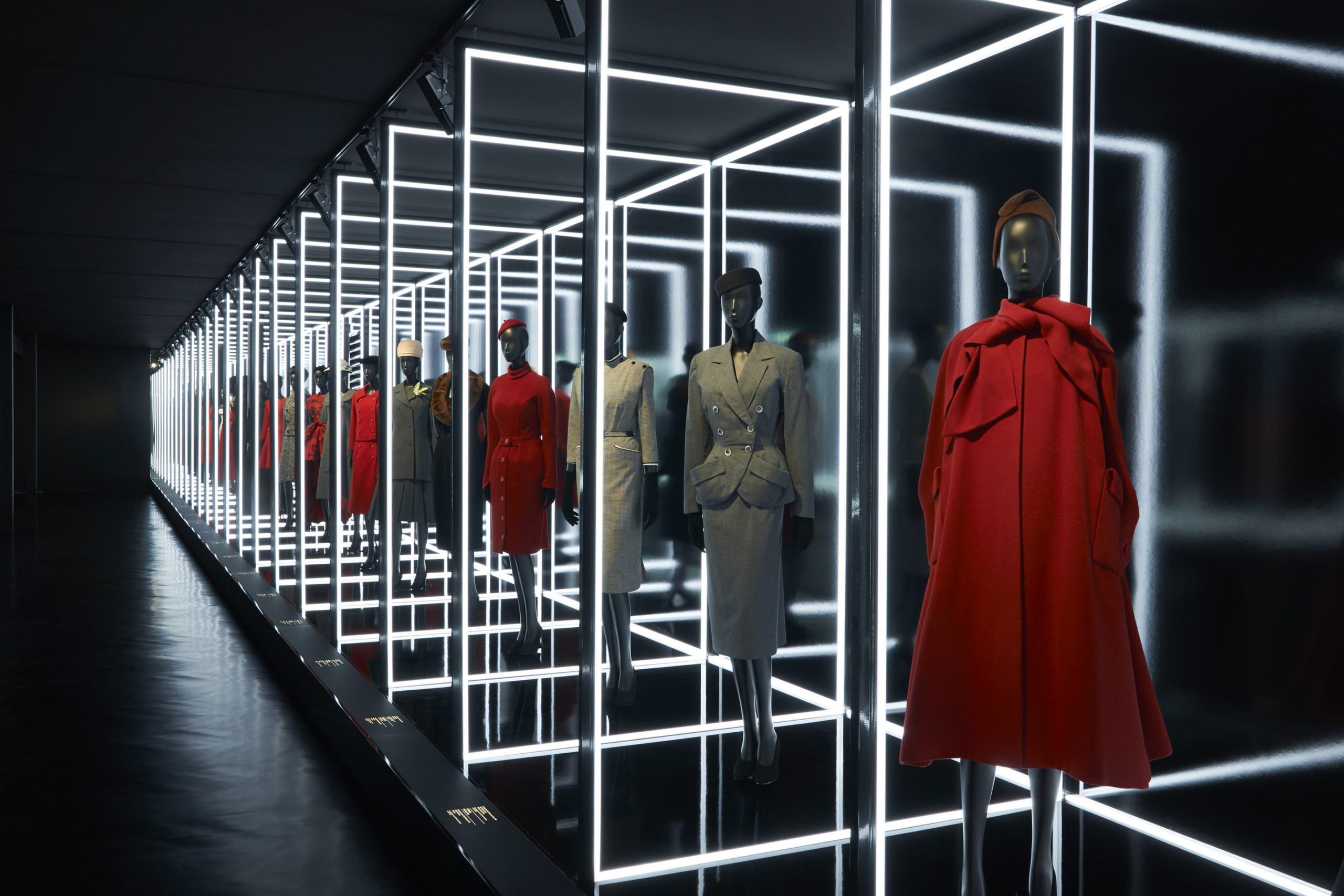
Installation views of “Christian Dior: Couturier du Rêve” at the Musée des Arts Decoratifs,” courtesy of Dior, photos by ©Adrien Dirand.
FM: There are hundreds of accessories that have never been seen, such as plaster casts for bottles. Through this, one discovers that the casting is the work of a sculptor.
WW: Mr. Dior passed away in 1957. How did you want to present the designs of the six artistic directors that followed?
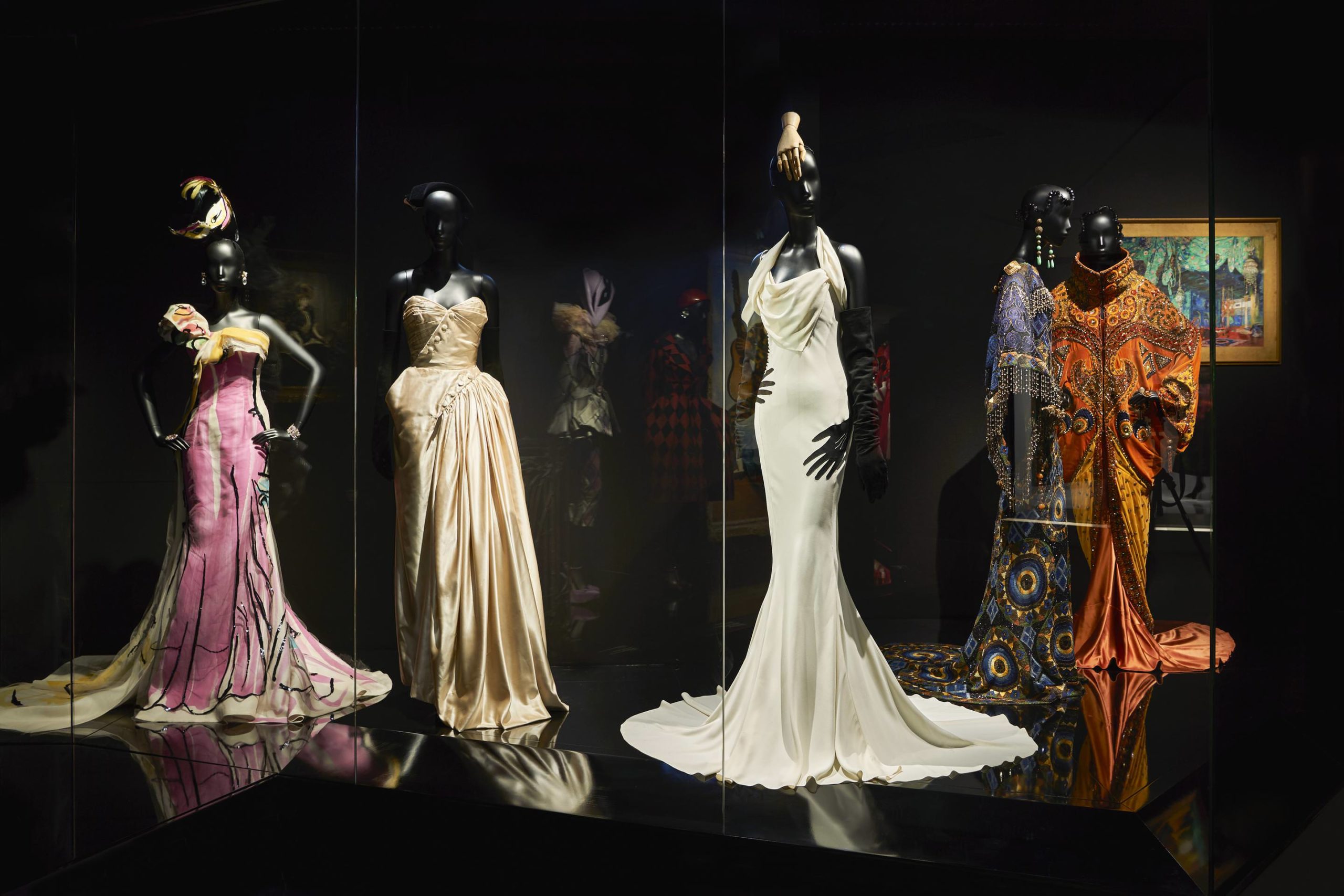
Installation views of “Christian Dior: Couturier du Rêve” at the Musée des Arts Decoratifs,” courtesy of Dior, photos by ©Adrien Dirand.
FM: It was essential to devote a room to each of the creative directors with, each time, some fifteen dresses displayed with around a dozen emblematic photographs and other various documents.
I have observed that, almost every time, when a new creative director arrives, they surprise everyone. As when Saint Laurent succeeded Christian Dior, for example; it was a bold choice at the time. But it is often a person likely to be imbued with the spirit of their time, and therefore able to translate it into the Dior language, which makes it possible for the house of Dior to remain very much in the present.
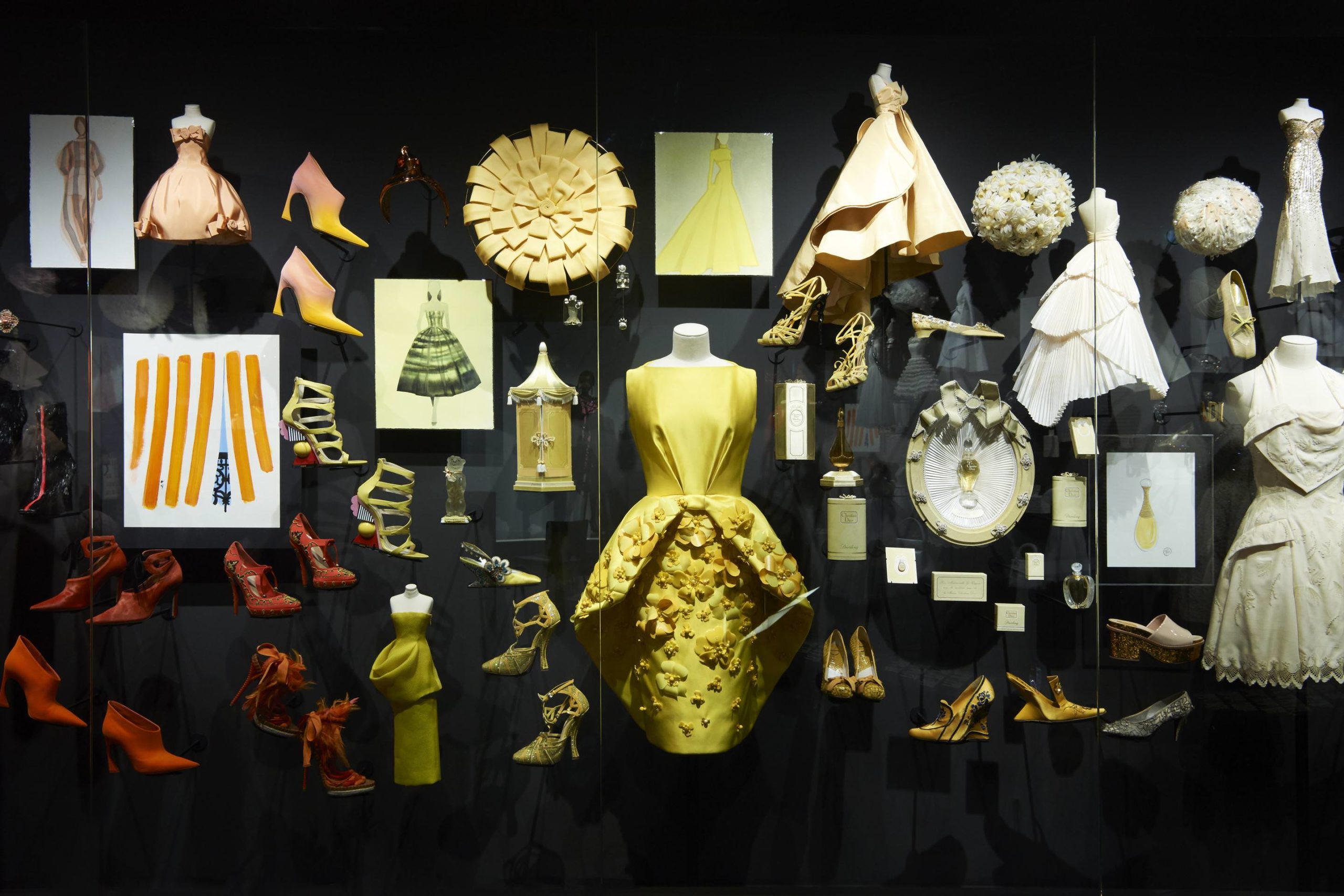
Installation views of “Christian Dior: Couturier du Rêve” at the Musée des Arts Decoratifs,” courtesy of Dior, photos by ©Adrien Dirand.
OG: Each room devoted to each of the creative directors explains and spotlights their approach and their emblematic creations. What is so striking about Dior is that, even though they all have different styles and perceptions of fashion, there is the sense of something consistent and coherent extending over the seventy years, and it’s this, in my opinion, that is the House’s strength.
WW: Did art continue to be a point of inspiration for subsequent creative directors?
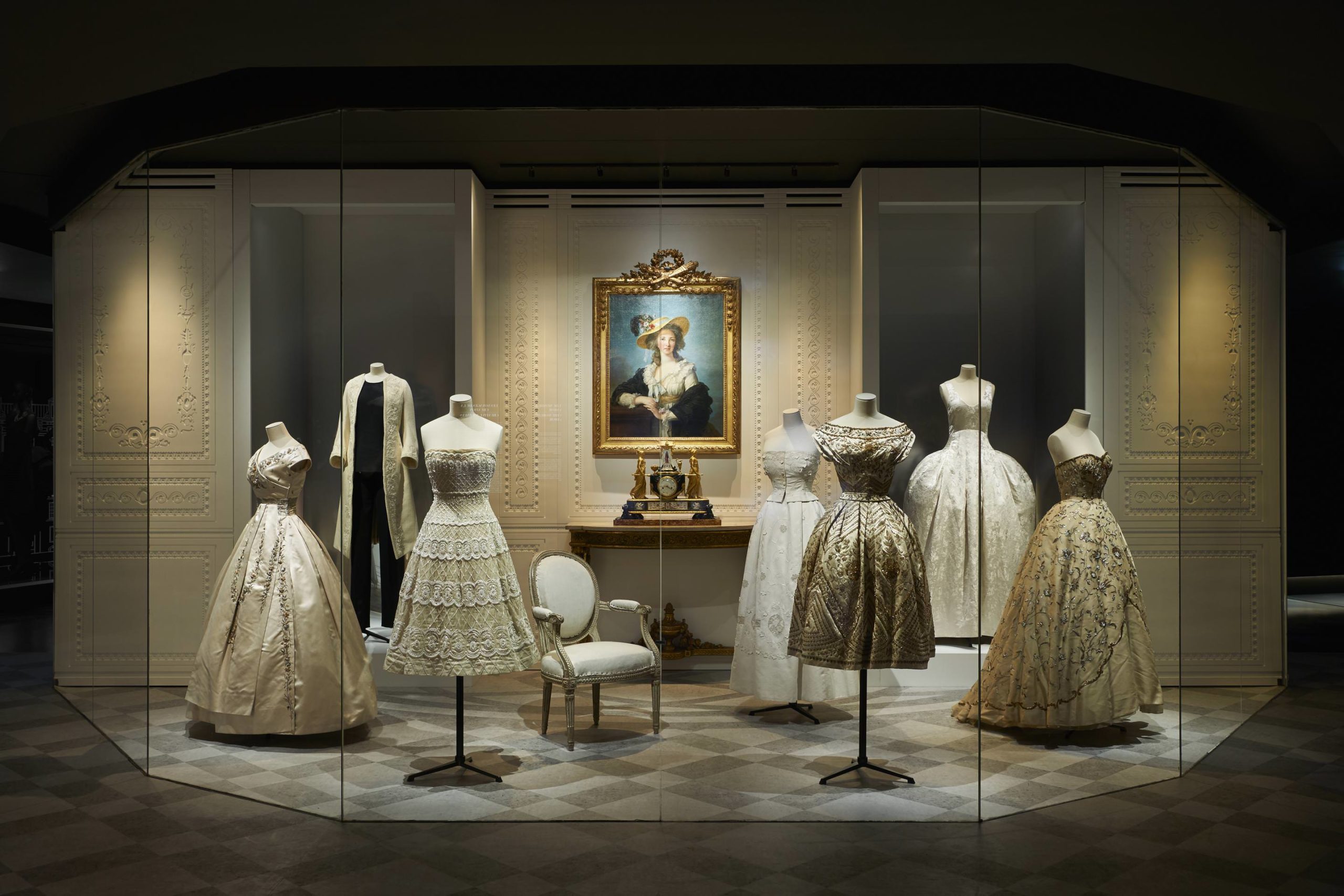
Installation views of “Christian Dior: Couturier du Rêve” at the Musée des Arts Decoratifs,” courtesy of Dior, photos by ©Adrien Dirand.
FM: There’s a room focusing on artistic affinities, in which we show the works of art that have inspired the House’s various creative directors. For example, we’ve positioned a Sterling Ruby painting opposite one of Raf Simons’ dresses. We also show how a couturier can take inspiration from a country’s culture when designing their collections.
WW: Do you have a personal favorite room?
OG: I would say the one on gardens, because Monsieur Dior’s designs there are extraordinary, and this isn’t just a common preconception; it was really fundamental to his thought process, then very sensitively reinterpreted by each of the creative directors. A subtle interplay exists between the paintings and the dresses. There’s Claude Monet’s Le Jardin painted at Giverny and a Fantin-Latour floral bouquet, two loans from the Musée d’Orsay, which form a harmony that I think Christian Dior would appreciate.
FM: I really like the “Paris” room, because it corresponds to me completely, with this idea of Parisian elegance that is a matter of subtleties. You’re suddenly saying “it’s perfect,” without quite knowing why; it’s very sophisticated, but simple, and, in my opinion, it’s very Dior. My second preference goes to the room devoted to gardens. I love this fresh aspect which appeals to the broad imagination. It’s a happy theme, recalling memories of childhood.





